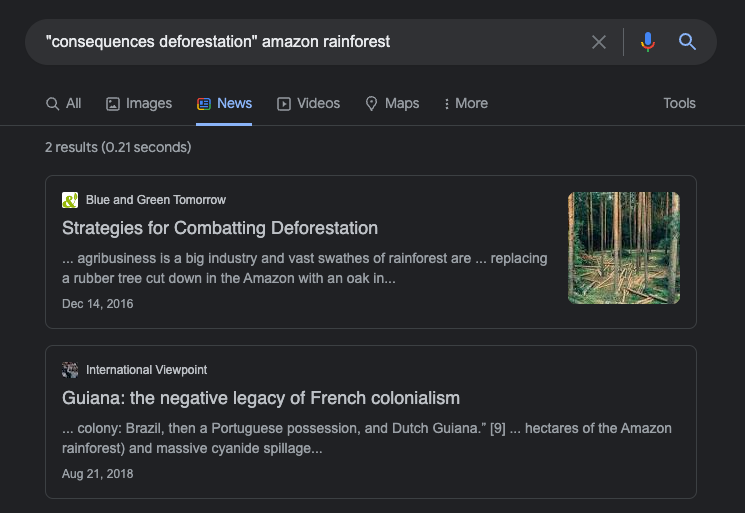4.5 Search Modes
Students often use facets when searching for images and videos without knowing they are doing so. Using facets allows you to narrow your search results.

Faceted Search
For example, according to the chosen research theme, we could only focus on current events. In the following example, we did a simple search using the keyword deforestation and we obtained 30,700,000 results.

If we click on News (faceted search), we filter the results and obtain 2,450,000 results. It's too many results and not necessarily related to my research topic.

Consequently, it is important to add the predetermined keywords (module 3 Plan) related to your research topic and use boolean operators to refine your search.
In this example, we obtained two results in just a few clicks! It is less than when we started and the results are more precise. But, we still need to verify if it's what we are looking for. We could use other keywords, look for different regions, etc.
There are many faceted searches we can use to refine our research.
